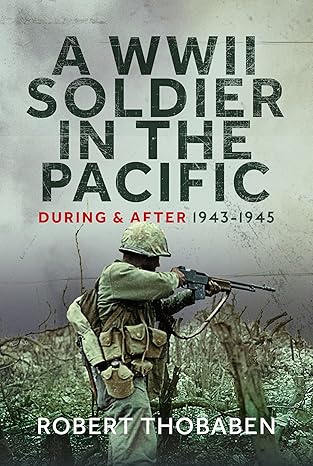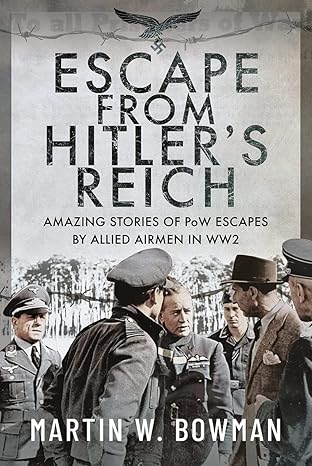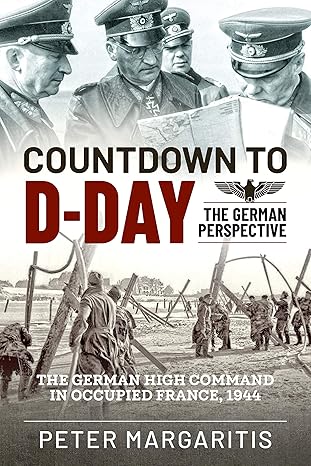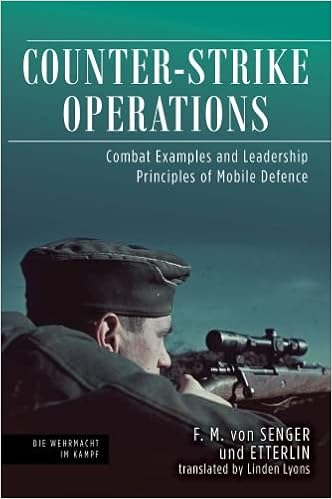The Battle of Buna-Gona
By Paul S. Teague
In the South Pacific the Japanese wanted to establish a perimeter which the Allies would not be able to penetrate, this perimeter would also allow the Japanese to interdict the lines of communications between the United States and Australia, thus isolating Australia. In order to accomplish this, the Japanese planned to capture Port Moresby, New Guinea and to use the facilities there for ground based air support against the Americans and Australians. The Japanese also planned to construct a sea plane facility at Tulagi, and to construct an airfield on Guadalcanal. The Japanese intentions were to Take Port Moresby and Tulagi in order to secure air mastery of the Coral Sea and its shores. It was allied resistance to this that resulted in the Battle of the Coral Sea 4-8 May 1942.[1]
The Allies were successful at the Battle of the Coral Sea in that, although the Japanese were successful in taking Tulagi on 3 May 1942 they were prevented from landing at Port Moresby. Though the Japanese landing at Port Moresby was thwarted, they still intended to take it. The entire purpose of the attempted landing at Port Moresby was to provide the Japanese with facilities to protect additional movements into Southern New Guinea and to launch raids on Australia to weaken the Allies ability to move troops.[2] The Japanese developed a plan to land an invasion force at Buna-Gona, on the North shore of New Guinea, attack across the Owen-Stanley Mountains using the Kokoda Trail, and take Port Moresby from the North. This operation would be supported logistically from Buna-Gona with resources sent from Rabaul.[3]
Allied airfields at Buna would be critical to Allied operations in the southwest Pacific. From Buna, it was only 340 air miles to Rabaul, the key to Truk, the premier strategic point in the Pacific. The use of Buna-Gona as a staging area for a campaign of western thrusts along the coast of New Guinea would endanger Japanese control of the Philippines and the Netherlands East Indies.[4] MacArthur intended to establish an airfield at Buna and begin a series of leapfrogging advances along the coast of New Guinea. The campaign would culminate at the northwestern tip of New Guinea, only a few hundred miles from the Philippines. MacArthur ignored warnings from naval intelligence that the Japanese were also planning to take Buna as a base for an overland assault on Port Moresby.[5]
MacArthur decided to secure the Buna area using Australian forces. The mission was given to the Maroubra Force consisting of the 39th Australian Militia Battalion and a Battalion of the Native Constabulary which proceeded, on 7 July, North on the Kokoda trail over the Owen-Stanley Mountains towards Buna-Gona.[6] The movement of the Maroubra Force over the Owen-Stanley Mountains was difficult because of the vegetation and the terrain. When the force arrived at the Northern terminus of the Kokoda trail they were unfit for combat. MacArthur’s intelligence officers had failed to conduct proper terrain analysis and did not determine accurate effects of the terrain and vegetation on friendly operations. On 31 July a second force was to depart Port Moresby over the Kokoda Trail, the force consisted of four Australian infantry companies and an American detachment of engineers. They were to secure Buna and wait for the arrival of a larger force that was to come by sea from Port Moresby, upon their arrival work was to start on an airfield.[7] MacArthur’s intelligence failed to foresee that the Japanese might have some plans themselves.
At dawn on 22 July the Australians from the Maroubra Force discovered that during the previous evening the Japanese had landed between four-thousand and six-thousand troops in the vicinity of Gona. The area was undefended; the Japanese were able to spread out and occupied Salamaua and Gona as well as Buna. The entire Japanese landing was supported by only a few float planes. The Allies attacked the Japanese with aircraft but the damage had been done. The Japanese were ashore. A few nights later a group of the Australian jungle guerrillas attacked Salamaua, killing forty Japanese at a cost of only two wounded. The Japanese retaliated the next day by bombing the villages of Mubo and Komiatum, which were just a couple of miles away.[8] Even as the Japanese were began to build an airfield, fortify the beachhead with anti-aircraft guns, and build a system of reinforced interlocking bunkers and trenches MacArthur dismissed the invasion as a minor threat. Colonel Yosuke Yokoyama, commander of the 144th Infantry Regiment, with elements of the 15th Engineer Regiment attached, had the mission of crossing the mountains and taking Port Moresby. He was to conduct reconnaissance along the Kokoda Trail, seize Kokoda Government Mission and its airfield, and then continue on to Port Moresby.[9]
Australians from the Maroubra Force discovered the Japanese were moving inland and were moving fast. The following morning the Australians set an ambush on the Oivi River as the lead elements of the Japanese attempted to cross. Fifteen Japanese were killed but the Australians were forced to retreat. The Australians realized they could not get enough troops to Kokoda to defend it before the Japanese got there decided to burn the station and to defend the burnt remains with what forces they had. On 29 July the Japanese arrived at Kokoda Government Station and defeated the Australian force there. On 8 August the Australians counter attacked and retook the airfield. Two days later the Japanese took the airfield for the second time, their casualties were high.[10]
On 26 August the Japanese began their attack from Kokoda towards Port Moresby. The Australian’s intention was to defend every village along the Trail to Ports Moresby. The first village Isurava, was the scene of a four day blood bath with the Australians experiencing their first “Banzai” attack. After four days of fighting and the loss of 250 killed the Australians were forced back down the Trail. The Japanese lost 550 men and had more than a thousand wounded and the mission was taking them much longer than they thought it would.[11] The attack along the Kokoda was costing the Japanese dearly and the delaying actions of the Australians were buying precious time for MacArthur to react to what he initially thought was a minor invasion. In addition to the attack from Buna the Japanese landed troops at Milne Bay to attack to seize Port Moresby from the east.[12] On 22 October MacArthur deployed 800 Australians against the Japanese who landed at Milne Bay. The Japanese were pushed back and evacuated by submarine on 26 October.[13] Because of the loss of Guadalcanal the Japanese the Imperial General headquarters ordered the Japanese to withdraw back to Buna, they had decided to consolidate their Papuan Forces at Buna and to devote their main effort to recapturing Guadalcanal. The Japanese forces were pursued by the 7th Australian Division (7 AD) which had been recalled from North Africa.[14]
MacArthur decided to commit the U.S. 32nd Infantry Division to New Guinea to Capture Buna. While the Australians were forcing the Japanese back on the Kokoda Trail towards Buna, the 32nd Infantry Division was to make a wide envelopment to the east and attack in force on the Japanese left in vicinity of Buna. During October and early November the 32nd Division’s 126th (126 IN) and 128th (128 IN) Regiments were moving into position, being flown most of the way. One Battalion, the 2nd Battalion of the 126th Infantry (2-226 IN) protected the left of the American forces by moving over the Owen Stanley Mountains towards Buna. By the evening of 18 November the American Forces were set. The 1-128 IN was in the coastal track southeast of Buna, with 1-126 IN to their rear, 2-126 IN and 3-126 IN were in position on the left, 3-128 IN was in position at Simemi south of Buna, 2-128 IN were in position at Ango southwest of Buna, and the 7th AD was driving forward on the trails to Gona and Sanananda. The Americans, believing the inaccurate intelligence MacArthur’s staff provided, expected a quick victory and were full of enthusiasm.[15]
MacArthur and his staff underestimated the logistical and environmental problems associated with the fighting in New Guinea as well as the number of Japanese defending in the Buna-Gona area. At Buna partially trained, inexperienced American troops fought in a jungle that was also a swamp, against a formidable enemy they could not see. The Australians, who were more experienced, ran into heavy opposition that MacArthur did not foresee, as they attacked towards Gona and Sanananda.[16] Intelligence reported that the Buna position was garrisoned by no more than a Battalion of Japanese, in reality the garrison consisted of two Battalions of the Japanese 41st Infantry, the 144th Infantry Regiment; engineer and air defense assets and five-hundred Japanese Marines, totaling and intelligence also indicated that no Japanese reinforcements were reaching the Buna area.[17] Another intelligence flaw was the failure to identify the extensive Japanese field fortifications. The Japanese had constructed hundreds of log bunkers reinforced with steel plates and rails and oil drums filled with sand. They were concealed with dirt and rocks and vegetation so they merged with the terrain. Unaware of these fortifications the Australians and Americans began the attack with confidence.[18] These miscalculations of enemy forces would lead to MacArthur relieving the 32nd Division Commander, Major General Edwin Harding and two Regimental Commanders because he thought the delays in taking Buna were the result of poor leadership, in reality it was because of the unidentified Japanese combat power.
On 16 November the 32d Division under General Harding and the 7th Division under General Vasey moved out against the enemy positions at the Buna-Gona beachhead. The Australians were characterized by their experience and battle weariness, the Americans by freshness and battle inexperience, but there was no difference in the courage of each.[19] The Americans were on the right, and the Australians on the left. Believing like the Americans that only a small number of the enemy remained, the Australians advanced confidently, sure of a quick and easy victory. The Australians quickly discovered that there were at least nine-hundred Japanese at Gona. The Japanese defense was centered on Gona Mission at the head of the trail. The mission and the surrounding native village area were honeycombed with bunkers, trenches, and firing pits, with every approach was covered. The Australian attack was conducted by the 25th Brigade, which made contact with the most southerly of the Japanese defenses late on 18 November. After suffering heavy loses the Australians had to withdraw but they were ready to try again on 22 November and again the next day without success but with high casualties. The situation was getting serious. In only three days of fighting, the brigade had lost 204 killed and wounded and there was little to show for these losses. The 25th Brigade had to be relieved by the 21st Brigade, the Australian reserve. The 21st Brigade executed attacks on Gona for a week but met with no more success than the 25th Brigade.[20] The attack on Gona had been going on for two weeks without success.
On 28 November the 21st Brigade renewed its attack on Gona; at dusk they ran into a network of concealed and well prepared positions the Japanese hit the battalion hard, inflicting thirty-two casualties on the Australians before they could disengage. The next day, after an air strike, the Brigade once again attacked but ran into the same kind of opposition and withdrew. On 1 December, after an artillery preparation the Brigade attacked again. This attack like the previous ones failed with severe casualties. On the 6th, the Brigade launched still another attack on Gona. The result was the same as before: heavy casualties and only a slight improvement in the Australian position. These unsuccessful attacks however gave the Japanese had taken a terrific pounding. They were utterly worn out and there were only a few hundred of them left by the evening of 6 December. Not knowing this, the Australian attacked again on 8 December. The Australians attacked Gona from the southeast and easily penetrated into the village and began clearing the enemy out. That night about one-hundred Japanese attempted a breakout, they were cut down in the darkness by the Bren guns of the Australians. The end came next day; on 9 December the Australians began to mop up in the Gona mission area. Gona had finally fallen.[21]
The Australian 16th Brigade was directed to take Sanananda. On 19 November while heading towards Sanananda they ran into a Japanese outpost whose mission was to delay an advancing force, to give the Japanese time to complete defensive preparations at Sanananda. The Australians immediately attacked. They were successful in reducing the outpost and continuing their advance but by noon they were stopped. The 16th Brigade had taken heavy casualties through combat and illness; they were still a fighting force. The Brigade could still hold, but its men were worn out and could attack no more. General MacArthur decided to cut the 26th Regiment from the 32nd Division to the Australians despite the fact that General Harding had given the task of taking Buna Village and Buna Mission to them. General Harding could see little justification for the diversion of half his troop strength to the Australians just as he was about to use it to take Buna. He felt it would lead to confusion, resentment, and misunderstanding, but MacArthur who was under a false impression about Japanese strength at Buna felt Harding could accomplish his mission with one regiment.[22]
The 126th Infantry linked up with the Australians on 21 November and almost immediately 2-126 IN was ordered back to the 32nd Division because of difficulties at Buna. The Regiment’s main attack did not go off until 25 November. The attack started off well, but like all the other attacks it too was stopped. The Americans continued to attack until 30 November; its only real success was over running a Japanese bivouac area and establishing a road block on the tail network leading to Sanananda.[23] The next three weeks of fighting was dedicate to maintaining this road block, in the meantime word came of the capture of Gona, this would permit a shift of allied forces towards Sanananda. This included the arrival of the U.S.163rd Infantry Regiment, allocated to the 7 Division from the U.S. 41 Division.[24]
From 4 to 15 January the 7 Division, including newly arrived Australian 18th Brigade and the U.S.163 Infantry, conducted operations to reduce the outer perimeter of Sanananda. They reduced several enemy strong points and by 16 January were ready to envelope Sanananda. The 18th Brigade was given the envelopment mission with the 163 IN in support, there were also tanks and artillery allocated to the mission. The attack went well and by the evening of 16 January had penetrated the Sanananda position. The Japanese were split up, short of ammunition, and starving. Realizing their position was untenable the remnants of the Japanese were evacuated by barge.[25] The 7 Division still had to mop up the groups of isolated Japanese. This task was complete by 22 January, like the defenders of Sanananda were destroyed.[26]
The situation at Buna was just as difficult as those at Gona and Sanananda. The 32nd Division began its attack on 19 November. The 1-128 BN was to attack towards Buna along the coast and 3-28 BN and seize the bridge between the new and old airstrips, because of the transfer of the 126 Infantry to the Australians, General Harding had to use his reserve, the 2-128 BN to attack Buna village. What the Americans did not know was the Japanese at Buna had just received eight-hundred reinforcements from Rabaul. The Americans were unable to make any progress, the weather; it rained unceasingly, the Japanese fortifications, and the increased strength of the Buna Garrison was too much for the Americans.[27]
The 2-128 BN initiated its attack to take Buna village and mission on the 21 November. Unknown to the Americans, who doctrinally should have had a three to one advantage during at attack, were outnumbered by the Japanese by two to one. This was a result of poor intelligence and the transfer of the 126 Infantry to the Australian 7th Division. The 2-128 BN could make no progress, but on 23 November the 2-126 BN, which had been recalled from the Australians, joined the 2-128 BN.[28] On 24 November the 2-128 BN and 2-126 BN attacked towards Buna but the ground attack became a complete failure when it encountered an unseen enemy firing machine guns from bunkers which could be identified.[29] General Harding realized he would need tanks if his attacks were to be successful. The Americans attempted to move three M3 Stuart tanks to the 32nd Division by sea but the barges sank under the weight of the tanks.[30] American morale understandably suffered as a result of these setbacks.
MacArthur was becoming incensed at the lack of progress at Buna; he was also displeased by the reports of the poor conditions of the American troops and their sagging morale. On 30 November he dispatched General Robert Eichelberger, the newly appointed overall Commander of American forces at Buna, to Buna with the instructions to relieve General Harding and Colonel Mott, Harding’s Chief of Staff and Colonel Hale, the 128 Infantry Commander. Eichelberger at Buna on 2 December, before relieving anyone he decided to conduct an inspection of the American positions. Out of ignorance of the fighting conditions, and of the Japanese strength, Eichelberger drew conclusions that were both negative and unfair. He believed the Americans lacked drive and the desire to fight. He discovered the men lacked combat rations, hot meals, and cigarettes. They were unshaven, their uniforms and boots were dirty and in tatters, and they showed a lack of discipline and military courtesy. Having been on the front at Buna for two weeks with virtually no progress to show for it except for hundreds of casualties, their morale was very poor. Eichelberger relieved Harding the two regimental commanders and most battalion commanders on 2 December 1942. This outraged many of the 32 Division’s officers and men who knew the delays were not the fault of those relieved, Eichelberger was described as ruthless, and Prussian.[31]
Eichelberger was to discover the faults for the delays were not the 32 Divisional leadership but MacArthur’s poor intelligence and planning. On 5 December Eichelberger had the 32 Division attack along the whole Buna front. The 32 Division experienced its first success as the Buna perimeter was penetrated. The Americans advanced all the way to the sea between Buna village and Buna mission. Eichelberger continued the attacks during the following weeks while bringing in fresh troops and tanks. Harding had been unsuccessful in persuading MacArthur to allocate tanks and artillery to the Division. On 18 December the Americans again were successful in breaking through to the sea across the strongly defended Japanese positions at Cape Endiadere, though they lost three tanks. The Americans were taking high casualties but they were advancing. Eichelberger continued with his attacks on Buna and by 3 January 1943 had eliminated Japanese resistance and secured Buna. What remained of the Japanese in the Buna area were a few sniper teams and small groups of stragglers.[32]
It was not until mid February 1943, several weeks after MacArthur had declared the operation over with only minor mopping up left to be accomplished, that the Allied eliminated the last die hard Japanese defenders.[33] Between the 32 Division and the 163 IN the Americans suffered 10,879 casualties including battle death, deaths by illness, battle wounds, and sickness. Many of these casualties could have been avoided if the American troops had been prepared properly. Before deployment over seas the 32 Division had been trained to fight in Europe. MacArthur failed as a commander by not ensuring they received proper jungle warfare training while in Australia before committing them to Buna. Again, the Australians could have assisted in this endeavor.
The battle of Buna-Gona had been An Allied success but it reflected no credit on MacArthur or his staff. MacArthur repeatedly ignored intelligence about the Japanese defensive capabilities and the sophistication of their fortifications. He failed to provide information on the terrain and vegetation to the 32 Division, this information could have easily been collected from the Australians who had been fighting in New Guinea. MacArthur did not believe the Japanese would be able to reinforce their positions with troops brought in from Rabaul, but the Japanese did this on several occasions. This resulted in ground commanders not knowing the actual enemy strength and planning accordingly, it also led to improper troop ratios, which should have been three to one in the Allied favor when attacking; unfortunately this was rarely the case.
MacArthur and his staff failed to develop a logistical plan that would provide the right resources when the troops needed them. Medical supplies, water, rations and ammunition were not supplied on an efficient basis. The commodities over looked that were most critical were artillery and tanks. The divisional artillery of the 32 Division was left behind in Australia due to lack of transport. This was especially negligent in that if MacArthur could not move such an important combat multiplier, he should not have committee the 32 Division until he could move them.
Finally, MacArthur’s relations with the leadership of the 32 Division was appalling. MacArthur refused to believe the situational assessments of Major General Harding, the 32 Division Commander. This resulted in MacArthur becoming impatient with the progress the Division was making against Buna. The lack of progress was caused by faulty intelligence, poor logistical support, and improper training which made Harding’s task that much harder. All of these deficiencies can be rightly laid at the feet of MacArthur’s headquarters.
The lowering of morale due to the battlefield circumstances is common, it happens in all units. However, Commanders should be relieved it is only when the troops lose confidence in their leadership. There were no overt indications of this within the 32 Division. The dispatch of Lieutenant General Eichelberger to Buna which resulted in the relief of Harding and two of his Regimental Commanders, regardless of the Eichelberger’s subsequent victory, caused resentment among the troops and lowered morale even more. If Harding would have been supplied with tanks and artillery when he requested it, as Eichelberger had, he might have led the 32 Division to victory instead of Eichelberger. It is true that in November and December 1942 the Americans were not prepared for combat in New Guinea, perhaps the most unprepared American was General MacArthur.
| * * * |
Show Notes
Bibliography
Campbell, James. The Ghost Mountain Boys: Their Epic March and the Terrifying Battle for New Guinea – The Forgotten War of the South Pacific. New York: Crown, 2007.
Center of Military History. Papuan Campaign: Buna – Sanananda Operation 16 November 1942 – 23 January 1943. Washington, DC: United States Army Center of Military History, 1990.
Drea, Ed. “World War II: Buna Mission,” World War II Magazine. (12 June 2006). Accessed 19 March 2015. http://.historynet.com/world-war-ii-buna-mission.htm.
Frank, Richard. Guadalcanal, the Definitive Account of the Landmark Battle. New York: Penguin Books, 1990.
Hoyt, Edwin. The Glory of the Solomans. New York: Stein and Day, 1983.
Huber,Thomas. “Eichelberger at Buna: A Study in Battle Command," Studies in Battle Command. Fort Leavenworth, KS: Combat Studies Institute, U.S. Army Command and General Staff College, 1998.
Johnson, George. The Toughest Fighting In the World. Yardly, PA: Westholme Publishing, 2011.
Mayo, Lida. Bloody Buna. New York: Doubleday and Company, 1974.
Milner, Sameul. Victory in Papua, United States Army in World War II. Washington, DC: Center of Military History, United States Army, 1957.
Morrison, Samuel. Coral Sea, Midway and Submarine Actions May 1942-August 1942. Boston: Little, Brown and Company, 1961.
Morrison, Samuel. Breaking the Bismarcks Barrier 22 July 1942-1 May 1944. Boston: Little, Brown and Company, 1950.
Rickard, John. “Battle of Buna, 19 November 1942- 2 January 1943.” Last modified 20 November 2008. Accessed 21 March 2015. http://www.historyofwar.org/articles/battles_buna.html.
Schaller, Michael. Douglas MacArthur, The Far Eastern General. Oxford, UK: Oxford University Press, 1989.
Taffy, Stephen. MacArthur’s Jungle War. Lawrence, KS: University of Kansas Press, 1998.
Footnotes
[1]. Samuel Morrison, Coral Sea, Midway and Submarine Actions May 1942-August 1942 (Boston: Little, Brown and Company, 1961), 5-6.
[2]. Edwin Hoyt, The Glory of the Solomans (New York: Stein and Day, 1983), 28.
[3]. Lida Mayo, Bloody Buna (New York: Doubleday and Company, 1974), 18-19.
[4]. Richard Frank, Guadalcanal, the Definitive Account of the Landmark Battle (New York: Penguin Books, 1990) 498-499.
[5]. Schaller, Michael. Douglas MacArthur, The Far Eastern General (Oxford, UK: Oxford University Press, 1989). 70.
[6]. Lida Mayo, Bloody Buna (New York: Doubleday and Company, 1974), 21.
[7]. Mayo, Bloody Buna, 23-24.
[8]. George Johnson, The Toughest Fighting In the World (Yardly, PA: Westholme Publishing, 2011), 107-107.
[9]. James Campbell, The Ghost Mountain Boys: Their Epic March and the Terrifying Battle for New Guinea – The Forgotten War of the South Pacific (New York: Crown, 2007), 48-49.
[10]. Campbell, The Ghost Mountain Boys, 54-55.
[11]. Campbell, The Ghost Mountain Boys, 60-63.
[12]. Samuel Morrison, Breaking the Bismarcks Barrier 22 July 1942-1 May 1944 (Boston: Little, Brown and Company, 1950), 33.
[13]. Morrison, Breaking the Bismarcks Barrier, 40.
[14]. Ed Drea, “World War II: Buna Mission,” World War II Magazine, (12 June 2006), accessed 19 March 2015, http://.historynet.com/world-war-ii-buna-mission.htm.
[15]. Center of Military History (1990). Papuan Campaign: Buna – Sanananda Operation 16 November 1942 – 23 January 1943 (Washington, DC: United States Army Center of Military History, 1990), 5-7.
[16]. Stephen Taffy, MacArthur’s Jungle War (Lawrence, KS: University of Kansas Press, 1998), 11.
[17]. Samuel Milner, Victory in Papua, United States Army in World War II (Washington, DC: Center of Military History, United States Army, 1957) 145-146.
[18]. Mayo, Bloody Buna, 100.
[19]. Johnson, The Toughest Fighting In the World. 211.
[20]. Milner, Victory in Papua 149-150.
[21]. Milner, Victory in Papua, 212-216.
[22]. Milner, Victory in Papua 152-153.
[23]. Milner, Victory in Papua 161-164.
[24]. Center of Military History (1990). Papuan Campaign, 67.
[25]. Center of Military History (1990). Papuan Campaign, 74-77.
[26]. Center of Military History (1990). Papuan Campaign, 80.
[27]. Mayo, Bloody Buna, 112-113.
[28]. Mayo, Bloody Buna, 115-116.
[29]. Mayo, Bloody Buna, 120.
[30]. John Rickard, “Battle of Buna, 19 November 1942- 2 January 1943,” last modified 20 November 2008, accessed 21 March 2015, http://www.historyofwar.org/articles/battles_buna.html.
[31]. Thomas Huber, “Eichelberger at Buna: A Study in Battle Command," Studies in Battle Command (Fort Leavenworth, KS: Combat Studies Institute, U.S. Army Command and General Staff College, 1998), 123-124.
[32]. Thomas Huber, “Eichelberger at Buna,” 124-125.
[33]. Taffy, MacArthur’s Jungle War, 11-12.
© 2026 Paul S. Teague
Written by Paul S. Teague
About the author:
Paul S. Teague retired after 26 years in the U. S. Army as an Infantry and Intelligence Officer. He has a BS in History from Eastern Michigan University, and is currently completing his Masters Degree in European History and writing his thesis on Field Marshal Bernard Montgomery. The First and Second World Wars are his primary historical interests. He lives with his wife and three children in Neunkirchen am Potzberg, Germany.
* Views expressed by contributors are their own and do not necessarily represent those of MilitaryHistoryOnline.com.
















